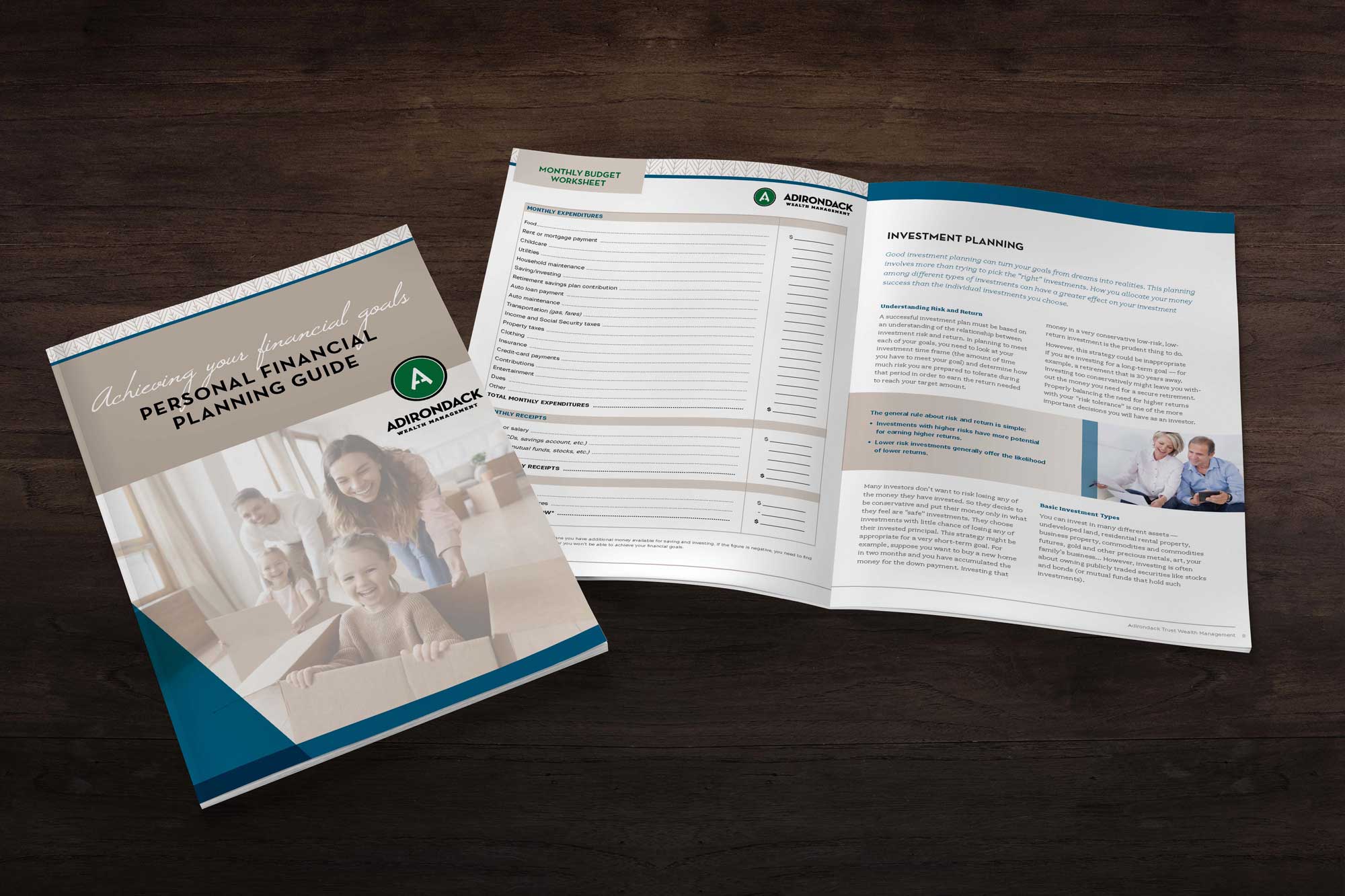Investing in the right opportunities can significantly impact your financial future. Considering factors such as your risk tolerance and investment horizon can guide you in selecting suitable investment options. Diversifying your portfolio and adhering to your financial objectives are crucial for achieving long-term success.
By carefully evaluating these aspects, you can make informed decisions that align with your personal financial goals while optimizing your investment potential.

Credit: www.bankrate.com
The Right Investment Opportunities
Understanding Your Personal Financial Roadmap
Your personal financial roadmap includes your financial goals, current financial situation, and the timeline for achieving these goals. These could include buying a home, saving for retirement, or funding your child's education. Understanding your roadmap is crucial for identifying the most suitable investment opportunities.
Assessing And Managing Risk Comfort Zone
Assessing and managing risk is vital in determining your comfort level with investment opportunities. It's essential to evaluate how much risk you are willing to take to achieve your financial goals. Understanding your risk tolerance will help you choose investments that align with your comfort level and long-term objectives.
Creating A Diversified Portfolio
Creating a diversified portfolio is crucial for managing risk and maximizing returns. Diversification involves spreading your investments across various asset classes, such as stocks, bonds, and real estate. This strategy helps mitigate the impact of market volatility on your overall portfolio.
Investing In Employer's Stock And Individual Stock
Investing in your employer's stock or individual stocks can offer potential rewards but comes with substantial risks. It's important to carefully evaluate these opportunities and consider diversifying your portfolio with other investment options to minimize the impact of any adverse stock performance.
Building And Maintaining An Emergency Fund
Building and maintaining an emergency fund is a critical aspect of personal finance. This fund provides a financial safety net during unexpected emergencies, reducing the need to liquidate investments prematurely. It's advisable to set aside three to six months' worth of living expenses in a readily accessible account.

Credit: www.adirondacktrust.com
Setting Investment Goals
When setting investment goals, it's crucial to consider your personal financial roadmap, risk tolerance, investment mix, and diversification. Assessing your objectives, risk level, and asset selection helps in making the right investment decisions aligned with your financial goals. Seek professional advice and review your strategy regularly for the best outcomes.
Considering Reasons For Investing
Identify why you want to invest to align your goals and financial aspirations.
Evaluating Risk Tolerance
Assess how much risk you are comfortable bearing to make informed investment decisions.
Deciding Investment Timescale
Determine the duration you are willing to commit for your investments to grow.
Making An Investment Plan
Create a detailed strategy outlining your goals and the steps to achieve them.
Building A Diversified Portfolio
Construct a portfolio with a mix of assets to spread risk and maximize returns.
Choosing Your Own Investment
Before you invest, carefully consider your financial goals and risk tolerance. Create a personalized roadmap and assess your comfort with risk. Diversify your investments and avoid concentrating heavily on individual stocks. Regularly review and rebalance your portfolio to align with your strategy.
Knowing Your Objectives
Before diving into the world of investments, it's crucial to have a clear understanding of your financial objectives. What are you looking to achieve? Are you saving for retirement, buying a new home, or funding your child's education? Knowing your objectives will help you determine the right investment opportunities that align with your goals.Selecting The Right Level Of Risk
Investments come with varying degrees of risk, and it's essential to select the right level of risk that you are comfortable with. Consider your risk tolerance and the time horizon for your investments. If you have a longer time horizon, you may be able to tolerate more risk and invest in higher-growth assets. On the other hand, if you have a shorter time horizon, it may be wise to opt for more conservative investments to protect your capital.Choosing Investments Within Each Asset
Once you have determined your objectives and risk level, it's time to choose investments within each asset class. Diversification is key here. Spread your investments across different asset classes, such as stocks, bonds, real estate, and alternative investments. This diversification helps minimize risk and maximize returns.| Asset Class | Investment Options |
|---|---|
| Stocks |
|
| Bonds |
|
| Real Estate |
|
| Alternative Investments |
|
Rebalancing Portfolio And Reviewing Strategy
Investing is not a set-it-and-forget-it strategy. It's crucial to regularly review your portfolio and rebalance it as needed. Market conditions and the performance of different investments can cause your asset allocation to deviate from your original plan. By rebalancing your portfolio periodically, you can ensure that it stays in line with your investment objectives and risk tolerance. Remember, investment decisions should be based on thorough research, consultation with financial experts, and consideration of your personal financial goals. With a well-informed approach, you can select the right investment opportunities that will help you achieve your long-term financial aspirations.
Credit: www.amazon.com
Identifying Good Investment Opportunities
To identify good investment opportunities for your personal financial goals, it's crucial to define your risk tolerance, set clear objectives, and diversify your portfolio. Conduct thorough research, seek professional advice, and regularly review and adjust your investment strategy for optimal returns and long-term growth.
Liquidity
Liquidity refers to the ease with which an investment can be converted into cash without causing significant impact on its market value. When identifying good investment opportunities, it is important to consider the level of liquidity that suits your personal financial goals.
- High liquidity investments, such as stocks or bonds, can be easily bought or sold without affecting their market value significantly.
- Low liquidity investments, such as real estate or private equity, may take longer to convert into cash and may have a higher risk of losing value during the selling process.
When choosing the right investment, make sure to assess your financial needs and determine the level of liquidity that aligns with your goals.
Principal Protection
Principal protection refers to the security of your investment's initial amount, ensuring that it is not subject to significant losses. When evaluating investment opportunities, it is crucial to consider the level of principal protection offered.
- Investments such as government bonds or fixed deposits offer a high level of principal protection, as the amount invested is generally guaranteed by the issuer.
- Investments in the stock market or other volatile assets may have a lower level of principal protection, as their value can fluctuate significantly.
Considering your risk tolerance and financial goals, it is important to choose investments that provide the appropriate level of principal protection.
Expected Returns
Expected returns refer to the profits or gains you anticipate from your investment. When identifying good investment opportunities, it is important to consider the potential returns you can expect.
- High-risk investments, such as stocks or cryptocurrencies, may offer the potential for higher returns but also come with a higher level of risk.
- Low-risk investments, such as government bonds or certificates of deposit, may offer lower returns but come with a lower level of risk.
It is essential to assess your financial goals and risk tolerance to determine the level of expected returns that align with your investment strategy.
Cash Flow
Cash flow refers to the income generated by your investment over a specific period of time. When evaluating investment opportunities, it is crucial to consider the cash flow it can generate.
- Income-generating investments, such as rental properties or dividend-paying stocks, may provide regular cash flow.
- Growth-oriented investments, such as stocks or mutual funds, may not offer immediate cash flow but have the potential for higher returns in the long term.
Based on your financial goals and investment strategy, consider the importance of cash flow and choose investments that align with your desired income stream.
Arbitrage Opportunities
Arbitrage opportunities refer to the ability to profit from price differences in different markets or assets. When looking for good investment opportunities, it is important to consider the potential for arbitrage.
- Arbitrage opportunities can arise from price disparities between two different exchanges, currencies, or securities.
- Investors who can identify and exploit these opportunities can potentially earn profits with minimal risk.
While arbitrage opportunities may not be readily available in all investment options, it is worth considering this factor when identifying potentially lucrative investments.
Determining The Best Investment Strategy
When determining the best investment strategy for your personal financial goals, it is important to evaluate your risk tolerance, create a diversified portfolio, and set realistic investment goals. Consider seeking professional advice to ensure you make informed investment decisions.
Assessing Your Goals
Before venturing into any financial investment, it's crucial to define your investment objectives clearly. Consider factors like your risk tolerance, investment timeline, and financial aspirations.Choosing Asset Allocation
Asset allocation plays a pivotal role in shaping your investment strategy. Design a diversified portfolio with a mix of stocks, bonds, and cash equivalents based on your financial goals.Diversifying Your Portfolio
Diversification is key to mitigating risks. Spread your investments across different asset classes and industries to safeguard your portfolio from market volatility.Reviewing Performance
Regularly evaluate the performance of your investments to ensure they align with your financial goals. Monitor market trends and make informed decisions based on your portfolio's performance.Adjusting Your Strategy
Remain flexible in adapting your investment strategy based on changing market conditions. Make necessary adjustments to maximize returns and minimize risks.Seeking Professional Advice
If you're uncertain about your investment decisions, consider seeking guidance from a financial advisor. Their expertise can help tailor an investment strategy that aligns with your long-term financial goals. By following these steps, you can create a robust investment strategy that positions you for financial success.Frequently Asked Questions Of How Do You Choose The Right Investment Opportunities For Your Personal Financial Goals
How Do I Choose The Right Investment?
To choose the right investment, follow these steps: 1. Create a personal financial roadmap. 2. Evaluate your risk tolerance. 3. Consider a mix of investments. 4. Be cautious with employer or individual stocks. 5. Build and maintain an emergency fund. Consider your investment goals, risk, timeline, and seek professional advice.
Avoid starting sentences with certain phrases and write in an active voice. Ensure your content is unique and free of plagiarism.
How Do I Choose My Investment Goals?
Choose your investment goals by: Setting clear objectives, assessing risk tolerance, deciding on a timeframe, creating a diverse portfolio, and reviewing regularly.
How Do I Choose My Own Investment?
To choose your own investment, evaluate your financial goals, risk tolerance, and investment timeline. Diversify your portfolio and seek professional advice for long-term success. Ensure to assess liquidity, expected returns, and principal protection for a good investment opportunity. Rebalance regularly to maintain your investment strategy.
What Makes A Good Investment Opportunity?
A good investment opportunity should have liquidity, principal protection, expected returns, cash flow, and arbitrage opportunities. Understanding these criteria helps assess profitability, risk, and viability. It's essential to evaluate these factors to make informed investment decisions for your financial goals.
Conclusion
As you navigate the world of investment opportunities, remember to tailor your choices to fit your financial goals. Take stock of your risk tolerance, diversify your portfolio, and seek professional advice when needed. By following these steps, you can pave the way for a prosperous investment journey.






0 Comments